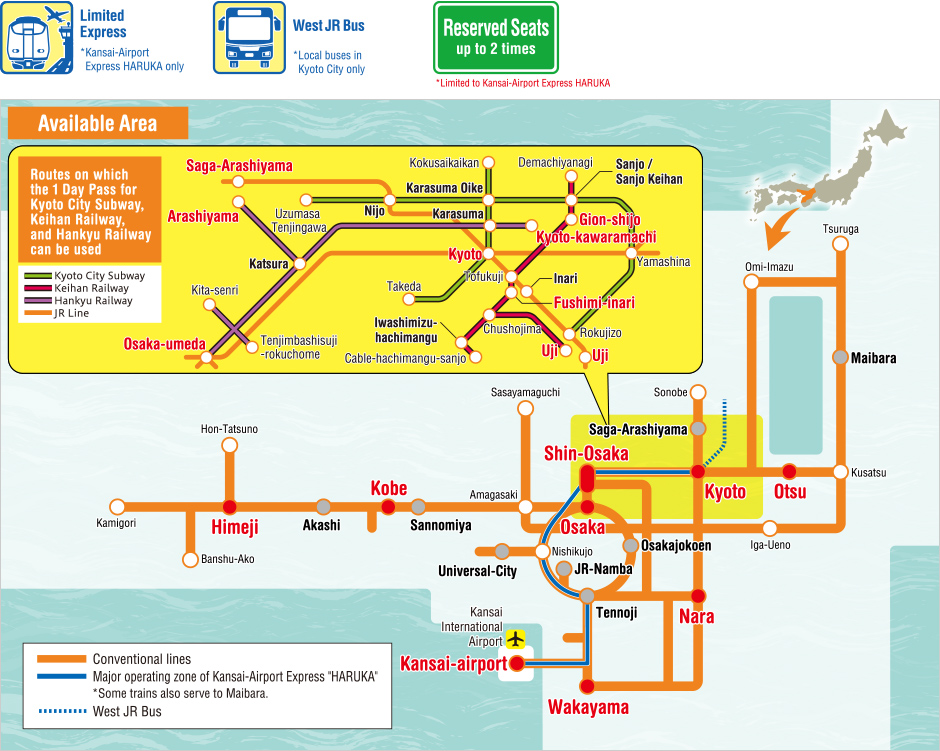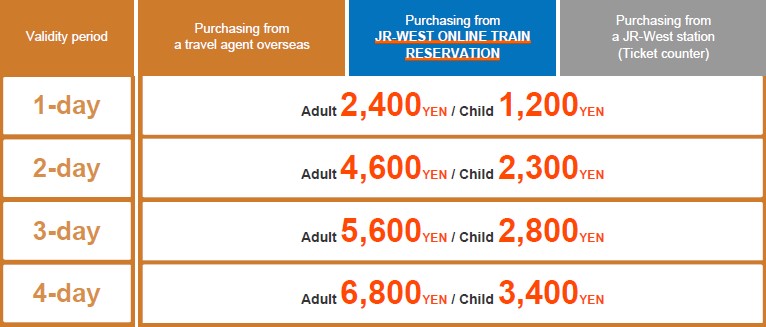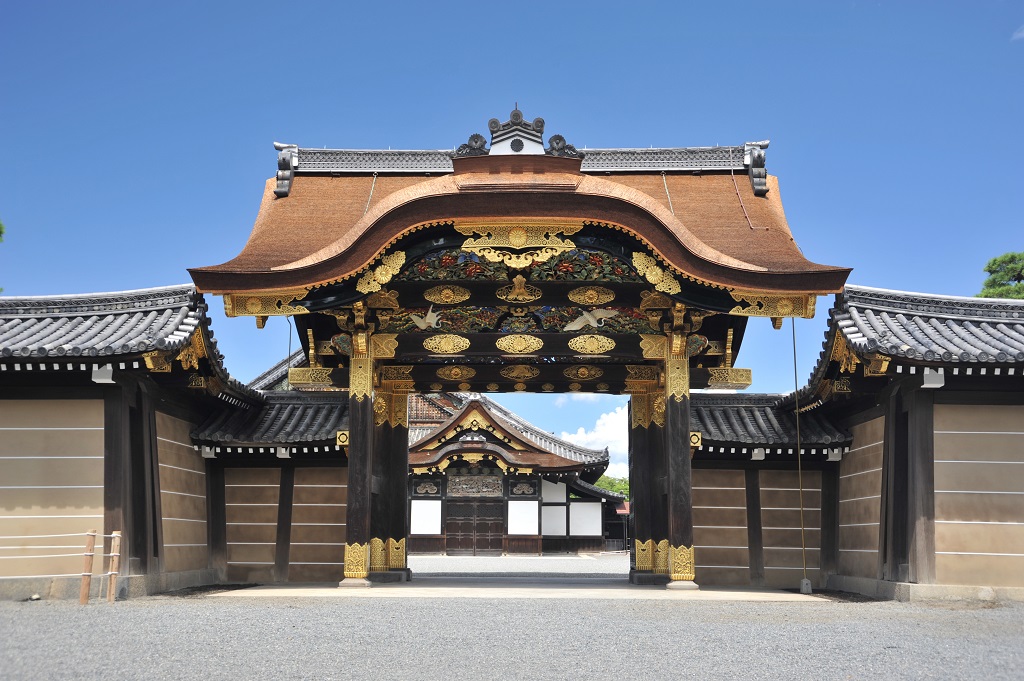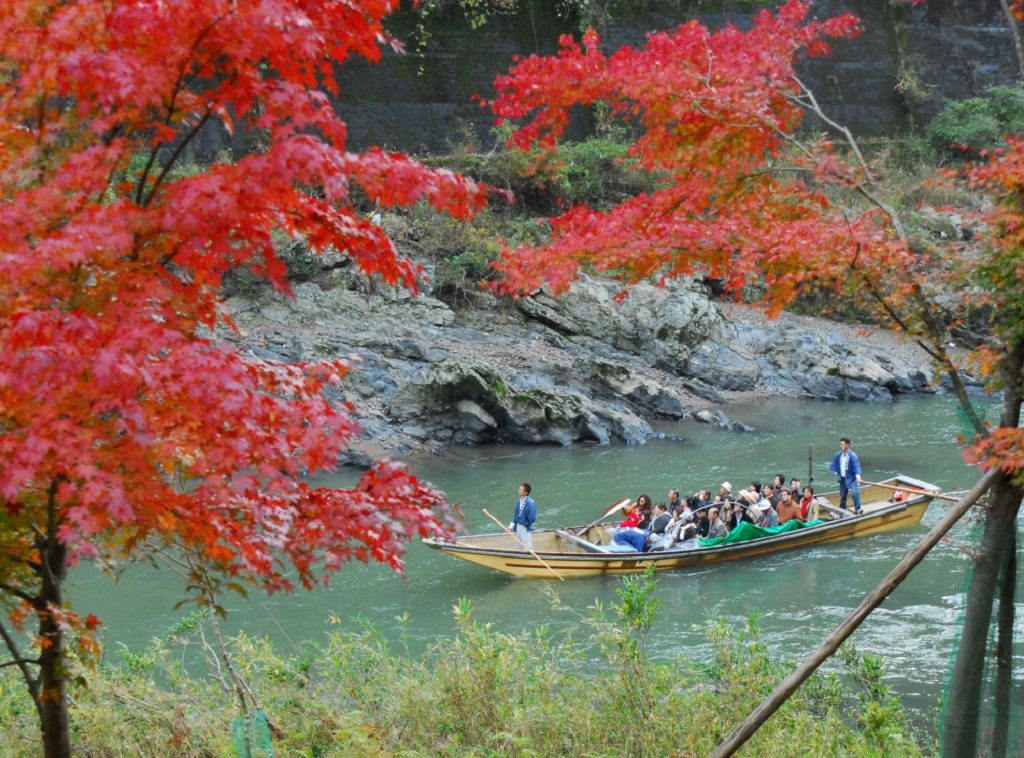Text / Luo Yi
When planning a trip to Japan, the task can be quite daunting and overwhelming. The first issue most people would face is not about the language but the traffic –- Should I buy a JR Pass? Can I take the subway with the JR Pass? Oh and there are so many one day passes of bus and subway, should I buy a day pass or a rechargeable transport card? Too complicated!
Ok, I decide to visit Kyoto. Here comes the second issue about itinerary: My time is limited, so how should I plan my itinerary wisely? How to avoid the crowds at those popular attractions?
Now, the newly released Kansai Area Pass can solve both of your issues with one stone. With this pass and the recommended itinerary, you can visit the main attractions in Kyoto in just three days.
Released date: 1st October, 2019
Validity Period: 1-4 days
Valid Trains:
⋅ Non-reserved seats on Kansai Airport Express HARUKA
⋅ Special Rapid Services, Rapid Services, and local trains on JR-WEST regular lines
⋅ Kyoto City Subway “One-Day Pass”
⋅ Keihan Railway “Kyoto Sightseeing Pass”
・Hankyu Railway ”Hankyu Tourist Pass 1 day” *2020.12~
* Separate Express Tickets are required for
⋅ Reserved seats on Kansai Airport Express HARUKA
⋅ Both reserved and non-reserved seats on Express Trains excluding Kansai Airport Express HARUKA

*Cannot be used for “shinkansen” bullet trains
Prices:
*Adult: 12 or over 12 years old when an exchange order is issued or a rail pass is purchased
*Child: 6-11 years old when an exchange order is issued or a rail pass is purchased
Eligibility
A rail pass user must be holding a passport issued by a foreign government.
A rail pass user must be entering Japan as a “Temporary Visitor.”
* “Temporary Visitor” is a status of residence defined under Japanese immigration law.
Purchasing and exchanging a rail pass
Step 1
Purchasing an exchange order (MCO: Miscellaneous Charges Order or E-TICKET) through a Travel Agency outside Japan
Step 2
After entering Japan, present the MCO with a passport at exchange locations, fill out an application with necessary details, and exchange for Kansai Area Pass. Exchange locations:
⋅ JR Kyoto Station, Shin-Osaka Station, Osaka Station, Nara Station, Kansai Airport Station, Wakayama Station, and Sannomiya Station
⋅ TiS Kyoto, TiS Osaka, TiS Sannomiya
⋅ Travel Service Center OSAKA, Travel Service Center SHIN-OSAKA
Step 3
Exchange for Kyoto City Subway “One-Day Pass” at the following locations:
⋅ City bus and subway information center, all stations of Kyoto City Subway
Step 4
Exchange for Keihan Railway “Kyoto Sightseeing Pass” at the following locations:
⋅ Sanjo Station, Tofukuji Station, Fushimi Inari Station, Uji Station
*There are both Keihan Railway and JR stations at Tofukuji and Uji. You can only exchange at Keihan Railway Tofukuji Station and Uji Station, not JR stations.
☆☆☆ A Fast and Easy Guide to Purchasing and Exchanging a Pass ☆ ☆ ☆
Don’t be scared off! It's actually quite simple. You only need to know:
1. Purchasing a pass before you come to Japan is cheaper than getting it in Japan, so it is recommended that you purchase through a JR Pass agent and exchange your tickets when you come to Japan.
2. The Kansai Area Pass is actually a joint pass of JR, Kyoto City Subway and Keihan Railway, so you need to exchange three tickets at the stations of these three companies.
3. For example:
Step 1: Buy a pass through a JR Pass agent and keep the MCO;
Step 2: Arrive at Kansai Airport and exchange for a pass at Kansai Airport JR Station;
Step 3: Take the Haruka to Kyoto Station, transfer to the subway, and exchange for Kyoto City Subway "One-Day Pass" at the subway station;
Step 4: Exchange for "Kyoto Sightseeing Pass" at Keihan Railway Sanjo Station.
☆☆☆ Why We Plan the Itinerary Like This ☆ ☆ ☆
1. Kiyomizu-dera Temple opens at 6:00 a.m., so you can visit it in the early morning before breakfast to avoid the crowds.
2. Gion is very busy during the day, therefore it’s recommended to visit it at night. You can walk around the dreamy historical neighborhood, Shirakawa, Hanami-koji Alley, Ishibe-koji Alley, Gion Corner, or have a cup of coffee at the world’s first Starbucks with tatami.
3. Using the
delivery service to handle your luggage can save you the time going to your hotel, and also avoid the hassle of traveling on public transport with large luggage.
4. Traveling by bus in Kyoto usually takes more time than by subway and railway, and buses to popular attractions are often overcrowded. It is likely that you can’t even get on board. So it’s recommended to use JR, subway and Keihan Railway to save time, as well as to avoid the hassle of finding a bus station or taking a bus to the opposite direction which are frequently encountered problems of foreign tourists.
☆☆☆ How much can you save with the Kansai Area Pass? ☆☆☆
1. If you do not buy a pass, the total transportation expense for the above itinerary is: Haruka round-trip ticket 5800 yen + subway One-Day Pass 600 yen + Keihan Kyoto Sightseeing Pass 600 yen = 7000 yen. If you buy a 3 day pass for 5,600 yen, you will save 1,400 yen, enough to have a bowl of ramen!
2. If you purchase the Haruka + ICOCA (a rechargeable transport card in the Kansai Area) round trip package, it will cost you 5,260 yen with 1,500 yen pre-charged to your ICOCA. But for the recommended itinerary above, supposing you stay near Kyoto Station, the local transportation in Kyoto will cost you 2,370 yen, which means you need to charge an extra 870 yen to your ICOCA. So your total expense will be 6,130 yen. Again Kansai Area Pass wins! And don’t forget a day pass always allows you to be more flexible with your trip, so Kansai Area Pass is your best solution for money and time-saving, as well as flexibility.




